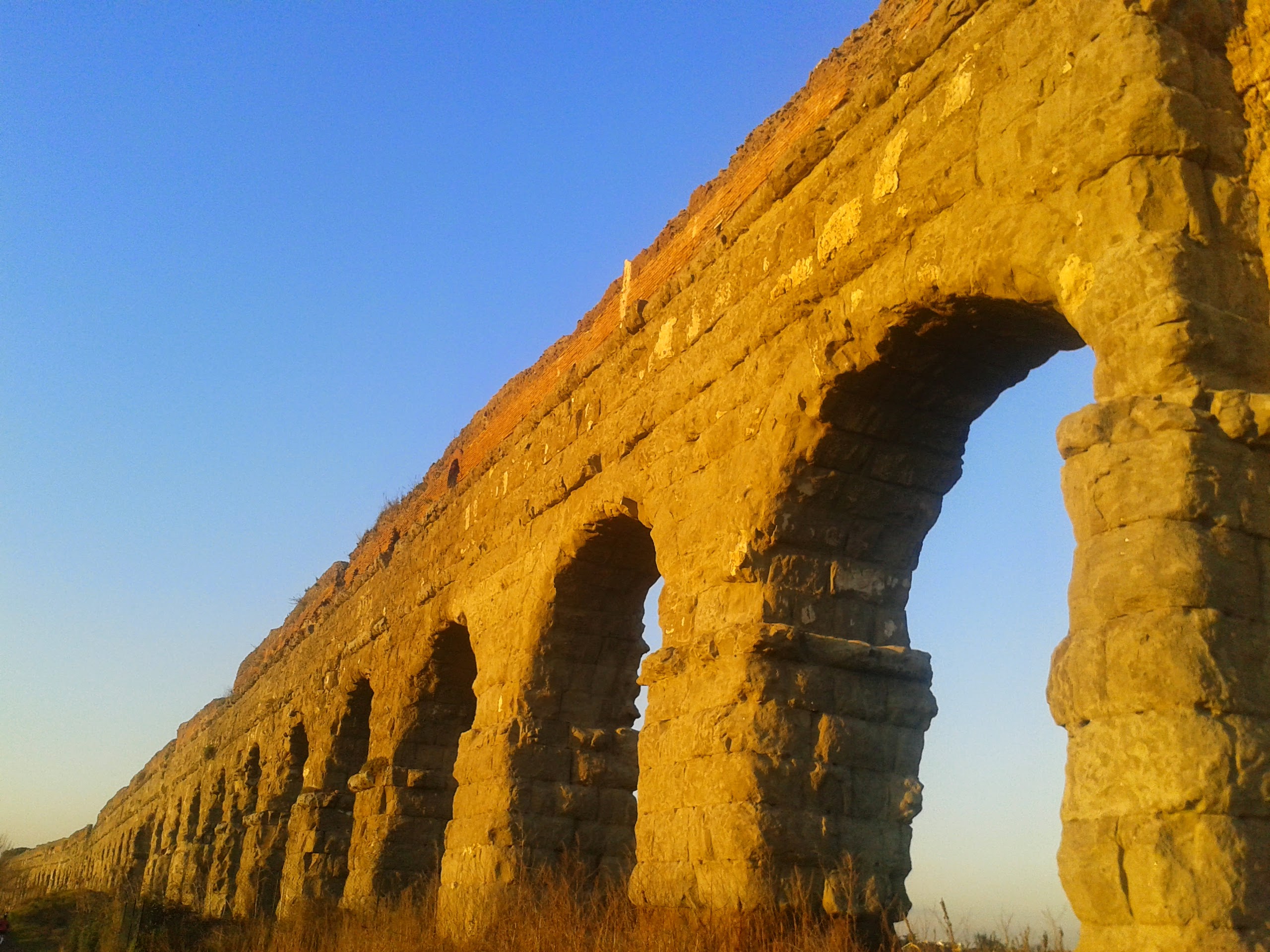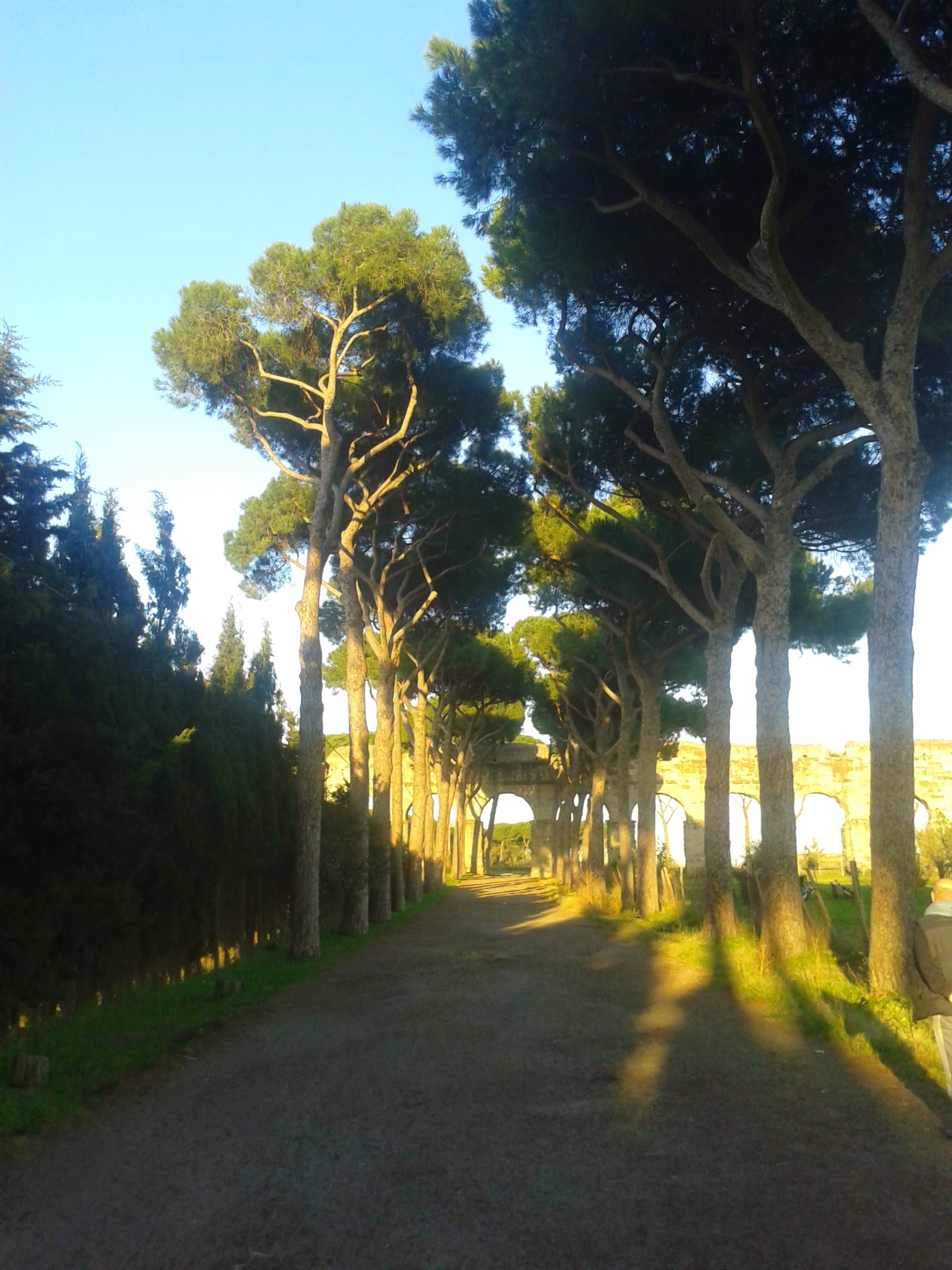ROME AND ITS WATERS
Water was the reason why Rome and its civilization
lived for a very long time providing hygienic standards that no other
civilization so obsessively developed.
Rome has always had its own underground network of deep water, lake
basins, short courses that feed the Tiber, but this ever-expanding city
needed more water and so the first aqueduct was built in 312 B.C. by
Appius Claudius the Blind for a length of 16 km and with a daily flow
of 73,000 cubic meters, the aqueduct entered the city from Porta
Maggiore, and through the Celio, it headed towards the Aventino to end
up in the Forum Boario; we speak of an era in which other great
civilizations had not developed any system of water collection, at
least not as structured as the Roman one.

This "highway" of water was the first of a total of 11 aqueducts, 6
still survive today in a piece of the Roman countryside known to all as
the "Parco degli Acquedotti".
The great arches that we all remember for having visited them in
pleasant spring walks, or for having seen them painted by Ettore
Roesler Franz in his watercolors, or for having seen them framed in
numerous film scenes, are the structures belonging to the Acqua Claudia
started by Caligula in 38 AD and terminated by his uncle and successor
Claudius in 52 AD
Water
is our common thread,
and it leads us not only to describe the engineering ability of the
Romans, to cite Frontino "water curator" in the first century. d.C .:
<< The aqueducts are the highest manifestation of the Roman
civilization >>, the water still allows us to talk about public
facilities such as the Baths or rather the SPA of the ancients.
SPA is the acronym of: Salus Per Aquae, and this sentence not only
describes a function, but describes a philosophy for the ancient Romans
for which physical well-being was accompanied by the well-being of the
soul and the mind thanks to the Greek and Latin libraries present in
the spa facilities. If this is not a civilization!
The access to the baths was guaranteed to all social classes, all could
take advantage of hot, warm baths, swimming pools, gyms, gardens, in
short, a real treat, and it is said that one day the Emperor Hadrian
had gone in bathrooms built by Trajan, and assisting the ablutions of
some low-class citizens in need of a beautiful "strofinatina" - today
we would call it scrub - and found the conditions of these, Adriano
magnanimously decided to pay assistants and masseurs to restore these
Romans in decent condition.

The news of the emperor's generosity spread quickly throughout the city
and the next day in the same spa Adriano found crowds of citizens with
their backs resting at the corners of the various environments rubbing,
to receive the same attention of the lucky ones the day before . Ah
these Romans! Yet the Emperor ignored everyone and left the Baths
rather angry.
The Baths were the place dedicated to relaxation, to body care, to the
care of the soul, and to the care of business above all, the best
contracts were stipulated with a vigorous narrow forearm - as was said
in Roman times - political decisions more stringent were discussed
between a massage and the other, the most secret plots were conceived
along the passage from the tepidarium to the calidarium.
It is true that access to the baths was guaranteed to all social
strata, some sources tell us that it was free, others tell us that the
cost for the plebs was equal to the cost of a bad glass of wine, which
is almost equivalent to say freely, however, these two versions agree
in substance: the basic care of the person had to be universally
allowed, to ensure that no hygienic danger posed to divert the
authorities from their task, or the government of the world.
There is a subtle and invisible purpose that guided the decisions taken
in favor of the population of Rome, the aim was to eliminate any kind
of social conflict, internal threat, hygienic danger, precisely because
the mission of Rome was that of dominatrix of the ancient world, it is
not accidental that the eternal city was declared "Roma Caput Mundi".
The aqueducts, the baths, the public fountains, the sewage system, all
that we women and men of the 21st century take for granted, have been
the engine of a historical era that has left us a legacy of
civilization, culture, and knowledge.
Rome still benefits from the services of a well-functioning mainstream
aqueduct, the manhole covers of the Cloaca Massima continue to channel
rainwater into the Tiber, and our modern SPAs follow the myth of mental
and physical well-being recruited two thousand years ago by our
ancestors.
We can state without any doubt that the Middle Ages began when the
aqueducts were cut, the drained sewage system interrupted, the thermal
baths left in abandoning and the salubrity of the waters became a
memory.
Please contact our Qualified Tourist Guide in Rome for this amazing tour



